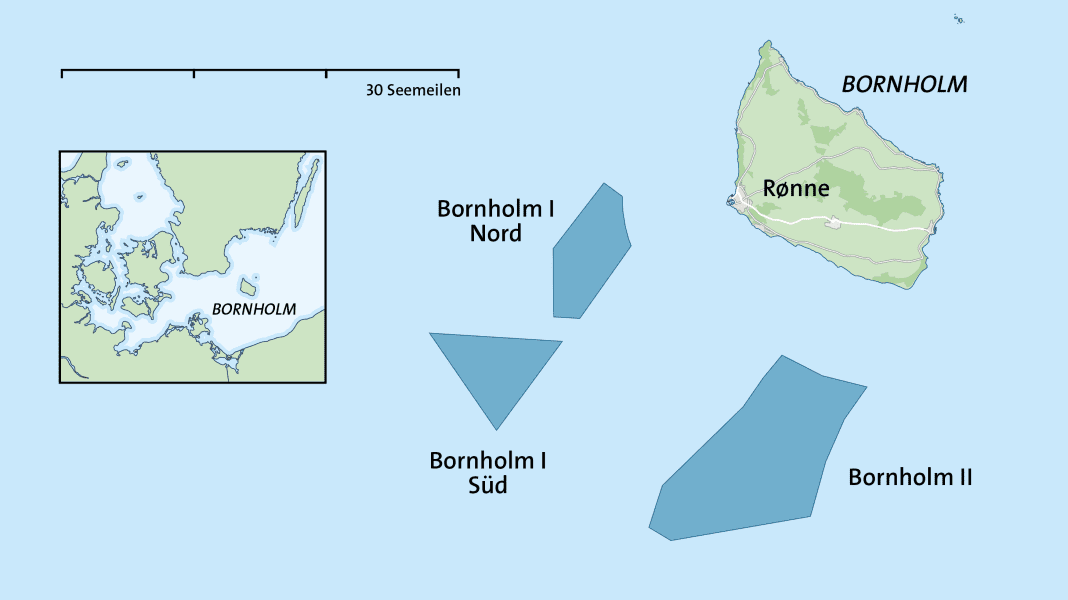
Skippers sailing their boats to Bornholm, a Danish island in the Baltic Sea, will soon be confronted with a completely new sight: Two huge offshore wind farms are planned about ten nautical miles south-west of the island. These wind turbines will be impressive in size: With a rotor diameter of 236 metres, they will reach a height of 268 metres above sea level. By comparison, the piers of the Öresund Bridge, which connects Denmark and Sweden, are only 206 metres high.
150 of these installations are to be built, spread over two areas: Bornholm I and Bornholm II. The shipping corridor between them will be 12 nautical miles wide and 20 nautical miles long (see map for approximate position and extent).
Germany will also benefit
On completion, which is targeted for 2030, they will have a combined output of three gigawatts. Even more is possible. However, even the target value would correspond to around three times the output of all current German Baltic Sea wind farms combined and would be enough to supply 3 to 4.5 million households, depending on the figures.
Germany will also benefit from the energy generation off Bornholm: Contracts have already been concluded that not only provide for the Danish island of Sjælland to be connected to the Copenhagen metropolitan region by cable: A second route will come ashore in Lubmin near Greifswald and establish a connection to the German electricity grid.
The plan envisages that the two wind farms will be connected to a high-performance transformer station on Bornholm, which is planned for the south coast east of the capital Rønne and will then transmit the electricity via the two high-voltage direct current cables on the seabed. In the long term, however, wind power is just one building block in an even more comprehensive innovative strategy for the energy transition in Denmark.
More on the topic:
An "energy island" as a lighthouse project
The wind and sun-rich Bornholm is then to become one of the country's two so-called energy islands (the second is to be artificially created in the North Sea off the Jutland coast). Plans include the establishment of a national research centre for alternative energy and the production of green fuels (so-called e-fuels). Officially, the plan is one of the largest infrastructure and construction programmes in Danish history.
The aim is to achieve greater security and independence in energy supply as part of the Europe-wide energy transition, on the one hand with regard to the ecological challenges posed by climate change, and on the other hand with regard to the new security policy realities in the Baltic Sea region - and in Europe as a whole. The project is also being followed with interest internationally, for example in Canada.
